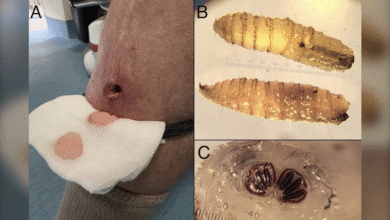Left-Handedness and Neurological Disorders: What You Should Know

Left-handedness and neurological disorders may share a significant connection, as evidenced by a groundbreaking study that explores the intricacies of handedness in relation to brain functioning. Approximately 10% of the global population is left-handed, yet individuals with autism are remarkably 3.5 times more likely to be left-handed, according to research that assessed over 200,000 participants. The findings, published in the journal Psychological Bulletin, indicate a higher prevalence of atypical handedness in individuals diagnosed with several neurological conditions, including schizophrenia and autism. This intriguing relationship prompts further investigation into how handedness, language development, and specific disorders interact, raising important questions about neurological conditions and handedness as they relate to cognitive processes. While correlation does not equate to causation, understanding this relationship could be essential for enhancing interventions for those experiencing these neurological challenges.
The phenomenon of left-handedness, or left-hand dominance, has long intrigued researchers, particularly in the context of various neurological conditions. Recent explorations have shed light on handedness in individuals diagnosed with autism and schizophrenia, suggesting that non-righthandedness can impact language development and cognitive functioning. These inquiries aim to unravel the complexities of how individual differences in hand preference may correlate with psychiatric conditions and neurodevelopmental disorders. By examining variations in handedness, researchers hope to contribute to a deeper understanding of the interplay between cognitive processes and neurological health. Thus, the discussion surrounding left-handedness and neurological phenomena continues to evolve, prompting further exploration into this fascinating intersection.
Understanding Left-Handedness: The Basics
Left-handedness is a fascinating trait that occurs in approximately 10% of the global population. Often seen as a unique characteristic, left-handed individuals frequently exhibit differences in cognitive processing and biological asymmetries when compared to their right-handed counterparts. This divergence can manifest in various aspects of life, including language development, artistic skills, and even in how they interact socially. Research suggests that this handedness is not merely a random occurrence but may be linked to genetic factors and neurological pathways in the brain.
Furthermore, the societal perception of left-handedness has evolved over the years. Historically, left-handed individuals faced significant stigma and prejudice, often being forced to conform to right-handed norms. However, in recent times, there has been a resurgence of interest in understanding the advantages that left-handedness can provide, particularly in sports and creative fields. Thus, the exploration of handedness opens a multifaceted dialogue about genetics, brain structure, and individual differences.
Left-Handedness and Neurological Disorders: An Intriguing Connection
Recent studies have indicated a potential link between left-handedness and various neurological disorders. Research reveals that individuals diagnosed with conditions such as autism, schizophrenia, and intellectual disabilities exhibit a higher than average occurrence of left- and mixed-handedness. This association raises intriguing questions about how brain organization relates to handedness, particularly in the context of disorders affecting language and cognition. Specifically, the genetic and developmental factors that influence handedness may share overlapping pathways with the neurobiological mechanisms underlying these disorders.
Notably, about 3.5 times as many individuals with autism display left-handedness compared to the general population. This correlation suggests that factors contributing to left-handedness, such as atypical brain development or differing neural pathways, may also play a role in the onset of autism and related conditions. While these findings are compelling, researchers caution that correlation does not imply causation, and further investigation is necessary to better understand how handedness and neurological conditions are interconnected.
The Role of Handedness in Autism and Developmental Disorders
The relationship between handedness and autism has garnered significant attention within the field of psychology. Research indicates that children diagnosed with autism are more likely to demonstrate left-handedness or mixed-handedness, raising questions about the neural links between these traits. The commonality of atypical handedness in individuals with autism suggests that these neurodevelopmental disorders might influence or reflect broader trends in brain asymmetry and lateralization.
Language development is particularly affected in individuals with autism, paralleling the findings related to handedness. Since handedness is closely tied to brain function and language processing, researchers are keenly interested in exploring how these factors may influence one another. The patterns observed in handedness among children with autism could offer insights into personalized interventions, ultimately leading to more effective strategies for supporting language development and cognitive growth.
Handedness and Schizophrenia: A Statistical Overview
Schizophrenia is another condition where research has noted a high prevalence of left-handedness among diagnosed individuals. Studies have suggested that the atypical handedness seen in these patients may be linked to the same neurodevelopmental anomalies that contribute to the onset of schizophrenia. Notably, understanding the relationship between handedness and cognitive processing in this disorder could help elucidate the mechanisms contributing to schizophrenia and aid in developing tailored therapeutic approaches.
Moreover, the implications of these findings extend beyond mere statistics. They prompt a broader exploration of how handedness may serve as a biomarker for risk assessment and treatment strategies within clinical settings. Early identification of left- or mixed-handedness could lead to more tailored interventions, providing support for cognitive and emotional development in individuals at risk of developing schizophrenia.
Language Development and Handedness: Bridging the Gap
The interaction between handedness and language development is a critical area of research in understanding neurological variations. Studies have observed that children who exhibit atypical handedness, especially those who are left-handed, may face challenges in language acquisition and development. The dominant side of the brain, typically associated with speech and language, corresponds with hand preference, suggesting that deviations from right-handedness could impact language functions significantly.
Understanding these nuances is crucial for educators and parents alike, as early intervention can be vital in aiding children who may struggle with language skills. By recognizing the correlation between handedness and language development, stakeholders can implement strategies that foster effective communication and linguistic abilities, ensuring that every child receives the support necessary for their growth and development.
The Implications of Atypical Handedness in Learning Disabilities
Atypical handedness has been linked to various learning disabilities, including dyslexia and dyscalculia. This connection showcases the intricate relationship between hand preference and cognitive functions. Many individuals with dyslexia demonstrate a preference for their non-dominant hand, which may correlate with their learning difficulties. Understanding this connection could help educators devise better teaching methods tailored to accommodate the learning styles of left-handed and mixed-handed students.
Furthermore, recognizing the implications of handedness in learning disabilities opens the door for targeted research that explores interventions. By identifying and addressing the unique challenges faced by left-handed students, educators can help mitigate the educational gaps often observed in those with learning disabilities, facilitating a more inclusive and supportive learning environment.
Potential Limitations of Handedness Research
While the connections between handedness and various neurological disorders are compelling, researchers have also acknowledged potential limitations in current studies. Correlation does not imply causation, and the conclusions drawn from these studies must be interpreted with caution. For example, not all neurological conditions exhibit a significant link to handedness, as evidenced by the lack of correlation between handedness and mood disorders such as depression.
These limitations highlight the need for further research to explore the underlying mechanisms of handedness. Understanding the complex interplay between genetics, environment, and neurological conditions will be essential for accurately assessing the implications of handedness in clinical practice. Future studies should focus on longitudinal assessments and wider demographic representations to provide a holistic understanding of handedness across various populations.
Future Research Directions in Handedness Studies
The study of handedness presents a myriad of opportunities for future research, particularly in relation to neurological health. Exploring the nuances of handedness not only enhances our understanding of cognitive processing but also allows researchers to investigate how specific conditions can influence hand preference. Future studies are expected to examine the role of handedness in neurodevelopmental contexts, particularly within children exhibiting early signs of cognitive or emotional disorders.
Moreover, interdisciplinarity will be critical in advancing handedness research. Collaborations among neurologists, psychologists, and educators will provide a nuanced perspective on how handedness impacts cognitive development across various domains. These studies could lead to valuable insights into tailored intervention strategies and highlight the importance of early identification and support for at-risk populations.
Caution in Interpreting Handedness Correlations
As researchers continue to explore the links between handedness and neurological disorders, it is crucial for the wider community to approach findings with caution. While there are significant correlations between left-handedness and certain conditions, the overall message is clear: handedness is just one of many factors that can influence neurodevelopmental outcomes. Misinterpretation of these studies could foster unnecessary stigma toward left-handed individuals, especially among parents concerned about their children’s neurodevelopment.
Therefore, while the findings prompt intriguing discussions about the mind and handedness, it is imperative that such conversations are framed in the context of broader neurological health. Parents and educators should be encouraged to support children regardless of their handedness, promoting an inclusive understanding that values individual differences without associating them with negative implications.
Frequently Asked Questions
What is the relationship between left-handedness and autism based on recent studies?
Recent studies have indicated that individuals with autism are 3.5 times more likely to be left-handed compared to the general population. This finding suggests a notable correlation between left-handedness and neurological conditions, particularly autism. Researchers analyzed data from over 200,000 individuals and found that left- and mixed-handedness occurs more frequently among those with autism, indicating potential links to neurodevelopmental factors.
How does handedness relate to schizophrenia and other neurological conditions according to research?
Research has shown that left- and mixed-handedness are more prevalent in individuals diagnosed with schizophrenia and other neurological conditions. This suggests that atypical handedness may be associated with certain psychiatric disorders that impact language development and cognitive function. However, it’s important to note that correlation does not imply causation, and being left-handed does not guarantee the development of schizophrenia.
What does ‘mixed-handedness’ mean, and how is it connected to neurological disorders?
Mixed-handedness refers to individuals who use their left hand for some tasks and their right hand for others, differing from ambidexterity, which involves equal use of both hands. Studies indicate that mixed-handedness is more common among individuals with neurological disorders, including autism and schizophrenia. This atypical handedness may be linked to underlying neurodevelopmental issues that can affect cognitive and language skills.
How does handedness impact language development in individuals with neurological disorders?
Handedness, particularly left- or mixed-handedness, may affect language development due to its association with brain organization. Key components of language typically reside in one hemisphere of the brain, and studies suggest that atypical handedness may correlate with long-term language issues such as dyslexia and stuttering. This intersection of handedness and language development highlights the complexity of neurodevelopmental disorders.
Does the timing of neurological symptoms influence handedness in individuals?
Yes, research indicates that the earlier the symptoms of a neurological disorder manifest, the more likely an individual is to exhibit left- or mixed-handedness. This correlation suggests that handedness may be established early in life and could be related to developmental processes that occur even in utero.
What implications do the findings on handedness and neurological disorders have for neurorehabilitation?
The findings about atypical handedness in individuals with neurological disorders have implications for neurorehabilitation strategies. Understanding the relationship between handedness and brain function can help tailor rehabilitation approaches for conditions such as stroke or traumatic brain injury, potentially enhancing recovery through personalized therapy.
Are all neurological conditions related to handedness?
Not all neurological conditions show a clear relationship with handedness. For example, research found that conditions like depression and dyscalculia did not demonstrate significant differences in hand preference compared to control groups. Thus, while there are associations between some disorders and handedness, it is not a universal rule across all neurological conditions.
What should parents know about their child’s handedness in relation to neurological disorders?
Parents should understand that while there is a correlation between left-handedness and certain neurological disorders like autism and schizophrenia, it does not imply that being left-handed will lead to these conditions. It’s essential to approach handedness as one of many factors related to individual development, and not to create unnecessary concern if a child prefers using their left hand.
| Key Point | Description |
|---|---|
| Prevalence of Left-Handedness | About 10% of the global population is left-handed, with higher rates in individuals with autism (3.5 times more likely). |
| Mixed-Handedness | Refers to using different hands for different tasks, distinct from ambidexterity. |
| Link to Neurological Disorders | Left- and mixed-handedness are more common in individuals with conditions such as schizophrenia, autism, and intellectual disabilities. |
| Correlation vs. Causation | The study indicates correlation but emphasizes that being left-handed does not mean one will develop a neurological disorder. |
| Language and Brain Development | Atypical handedness may be related to long-term language issues; handedness and language processing can be distributed across brain hemispheres. |
| Research Implications | Further research is needed to understand the implications of handedness on neurological conditions and to avoid stigma. |
Summary
Left-handedness and neurological disorders are interrelated, as highlighted by recent studies that reveal a higher prevalence of left- and mixed-handedness among individuals diagnosed with conditions like autism and schizophrenia. While these findings offer important insights into the complexities of human brain development, they also stress that correlation does not equal causation. Not every individual with left-handedness will develop a neurological disorder, and it is crucial to approach this subject with care to avoid unwarranted stigma. More research is necessary to deepen our understanding of the relationship between handedness and mental health.




